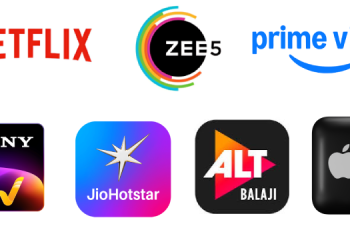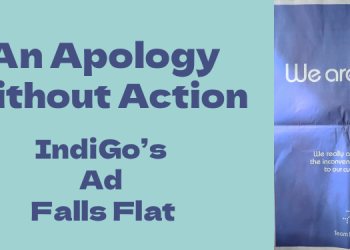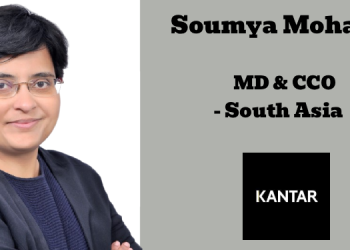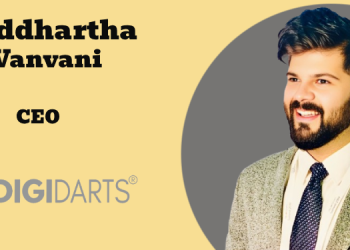In the dynamic landscape of digital influence, brands are experiencing a significant shift in their association with influencers. A Diwali report from influencer platform Qoruz reveals a 21 pc surge in influencer collaborations over the past two years. It states that brands dedicated budgets surpassing Rs 300 crores for influencer marketing during the festive season.
According to the report, 80 pc of Diwali shoppers actively engaged with content led by influencers. Notably, influencer marketing proves to be 1.5 times more effective on millennials compared to other age groups, including boomers, GenX and Z. The report also suggests that incorporating influencer marketing is essential for engaging millennials and GenZ, who wield substantial purchasing power.
What are the metrics shaping choice of influencers today? How are brands gauging the effectiveness and impact of influencer collaborations? From engagement rates and reach to conversion metrics, the contemporary influencer space relies on a diverse set of key performance indicators, say practitioners.
What are the metrics shaping choice of influencers today?

“In the contemporary landscape, brands meticulously consider various metrics when selecting influencers for their campaigns. Engagement rates play a pivotal role, reflecting the extent to which an influencer’s audience interacts with their content. Metrics such as likes, comments, and shares provide valuable insights into the resonance of an influencer’s message with their followers,” observes Kowshik Komandur, AVP, OnMobile Global.
According to him, authenticity is another crucial metric.
“Brands seek influencers whose values align with their own, fostering a genuine connection with the audience. The credibility and trustworthiness of an influencer significantly impact the success of a campaign, as consumers increasingly value authenticity over overt promotional content,” he adds.
“Audience demographics are key determinants in influencer selection,” Komandur underlines.
“Brands analyse an influencer’s follower demographics to ensure alignment with their target market. Understanding the age, location, and interests of an influencer’s audience helps tailor campaigns for maximum impact,” he notes.
According to him, the reach of an influencer, measured by their follower count, remains a fundamental metric.
However, Komandur says that the focus is shifting towards micro and nano influencers who may have smaller but highly engaged audiences. Micro-influencers often offer a more niche and targeted reach, fostering deeper connections with their followers.

In the current landscape, the choice of influencers is no longer solely dictated by follower count. While celebrities are undoubtedly powerful for creating broad awareness due to their extensive reach, the emphasis is shifting towards engagement metrics, notes Sachin Kumar, Founder, Bottle Openers.
Says Kumar, “Brands are now prioritising influencers who not only have a significant following but also showcase high engagement rates. Macro and micro influencers, with their dedicated and niche audience, are gaining popularity because of their ability to foster deeper connections and interactions.”
“Engagement rate, reach, audience demographics, content quality, brand fit are some of the important metrics shaping the choice of influencers today,” he explains.

“Brands should always evaluate whether the influencer is suitable for them based on the core content they prepare. Other influencing factors are content frequency, follower count, expected reach, engagement rate, geo spread of followers etc.” observes Azmat Habibulla, CMO, South Indian Bank.

Kunal Khandelwal, Group Head – Outreach, SoCheers, says, “Some of the key metrics shaping choice of influencers are, engagement rate – which measures the percentage of followers actively engaging with the influencer’s content (likes, comments, shares), reflecting audience dedication and responsiveness. High engagement indicates a more dedicated and responsive audience.”
“Reach is another factor that indicates the number of unique viewers exposed to the influencer’s content, providing insights into potential audience size. Relevance – aligning the influencer’s niche and audience demographics (age, location, gender, interests) with your brand target is crucial. Niche mismatch may affect campaign effectiveness,” Khandelwal adds.
Content quality and creativity are critical factors, says Khandelwal. The influencer’s content style should resonate with the brand and message to be shared, he underlines.
He is amongst many who emphasise on authenticity and trust born of genuine endorsements; influencers known for their relatable and honest approach generate more trust and brand loyalty. Among other means used are sentiment analysis, which gauges brand perception and campaign effectiveness, and ROI analysis which analyses the cost of collaboration against the return on investment to determine the overall value and efficiency of partnering with a specific influencer, Khandelwal adds.
What are the performance indicators used today?
Brands leverage a spectrum of performance indicators to gauge efficacy of campaigns.
According to Komandur, performance indicators include conversion rates (to sales or desired actions like website visits). ROI is also measured on overall impact on brand visibility and perception. Metrics such as impressions, reach and mentions help gauge the extent to which the campaign has elevated awareness amongst the target audience, he notes.
He reveals that brands are looking at engagement metrics beyond basic likes and comments, like time spent on content, shares and creation of user-generated content inspired by the influencer campaign.
Khandelwal points to campaign-specific metrics and tracked metrics like click-through rates (CTRs) for branded links, coupon code usage, or website traffic generated through the influencer’s content. Brand sentiment analysis helps monitor online conversations and brand mentions surrounding the influencer campaign, he notes, adding that conversions and sales would ultimately be the end goal of an influencer marketing drive.
“Performance indicators in influencer marketing have evolved beyond simple likes and comments,” underlines, Kumar.
“Click-through rates (CTR) and conversion rates are becoming crucial metrics for brands. The focus is on understanding not just the buzz created by influencer content but also its real impact on tangible outcomes. Authenticity scores and sentiment analysis are gaining prominence, ensuring that the influencer aligns genuinely with the brand’s values and resonates authentically with their audience,” he adds.
What metrics and performance indicators should brands prioritise?
“In crafting a successful influencer marketing strategy, brands should prioritise a balanced approach,” says Kumar.
“While celebrity influencers offer broad visibility, the consideration should also be given to the cost-benefit analysis, as they often come with a higher price tag. Macro and micro influencers, on the other hand, are proving to be more cost-effective in driving engagement and consideration within specific target audiences. The key is finding the right mix based on campaign objectives. A well-rounded strategy often involves a blend of celebrities, macro, and micro influencers to ensure both reach and genuine audience connection. In essence, the influencer marketing landscape demands a nuanced understanding of metrics, emphasising engagement over sheer numbers, and a strategic combination of influencer tiers to achieve campaign goals effectively,” he adds.
According to Khandelwal, the most important metrics depend on the specific goals of the campaign.
“If the brand’s primary objectives are awareness, then reach and engagement needs to be prioritised. If driving sales is key, focus needs to be on campaign-specific metrics and conversions,” he notes.
Khandelwal explains that while reach and engagement remain important, it’s critical to elevate the importance of metrics like conversion rate, brand sentiment and community engagement for a more comprehensive understanding of the campaign’s impact. Since different campaigns have different goals, metrics should align with the specific objectives of the campaign. whether it’s brand awareness, website traffic, or sales, he adds.
Long-term evaluation and platform-specific metrics and tools need to be incorporated into the strategy, he underlines.
“Choosing the right influencer is not just about numbers, qualitative aspects like content style, authenticity, and audience fit to play pivotal roles in building impactful and long-lasting brand partnerships. By strategically selecting influencers and focusing on the right metrics, brands can navigate the evolving digital landscape and leverage the power of influencer marketing to achieve their desired outcomes,” he notes.
(With inputs from Riya Sethi.)
Feedback: [email protected]

















